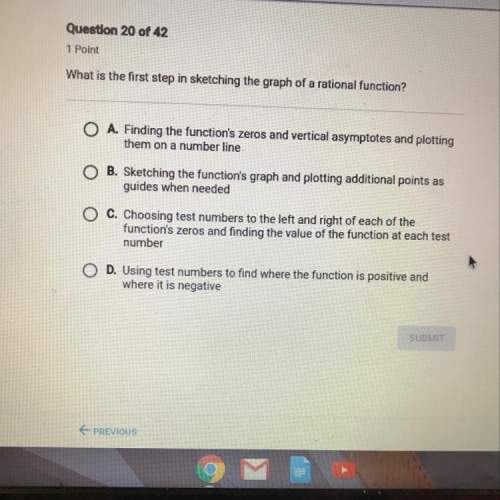
Mathematics, 29.10.2019 04:31 maliyahclays
Here is another version of the quotient-remainder theorem: given any integers n, d with dメ0, there exist unique integers q, r satisfying (1) n dq + r (2)-d/2 < r d/2 find the quotient and remainder (using the theorem above! ) for the following pairs of integers n= 11,d=2 n 11, d ,r= n=-11, d=3 q= re n= 54 d = 7 -54 d 7 qf ,r= n= 52 d-8 qf n=-52 d = 8

Answers: 3


Other questions on the subject: Mathematics

Mathematics, 21.06.2019 12:30, erickamurillo9929
Asystem of equation is shown below 6x - 2y equals 3 . and 5x + 3y equals 4. would you solve by substitution or elimination? and why
Answers: 2

Mathematics, 21.06.2019 19:00, Keekee9847
What is the equation of the line in point-slope form? y+ 4 = 1/2(x+4) y-4 = 1/2(x + 4) y-0 = 2(x - 4) y-4 = 2(8-0)
Answers: 2

Mathematics, 21.06.2019 20:00, PastryCrisp
The function f(x) = 14,600(1.1)* represents the population of a town x years after it was established. what was the original population of the town?
Answers: 1
You know the right answer?
Here is another version of the quotient-remainder theorem: given any integers n, d with dメ0, there...
Questions in other subjects:


Mathematics, 05.05.2021 23:50



Mathematics, 05.05.2021 23:50

History, 05.05.2021 23:50

English, 05.05.2021 23:50

Law, 05.05.2021 23:50

Computers and Technology, 05.05.2021 23:50

Chemistry, 05.05.2021 23:50




